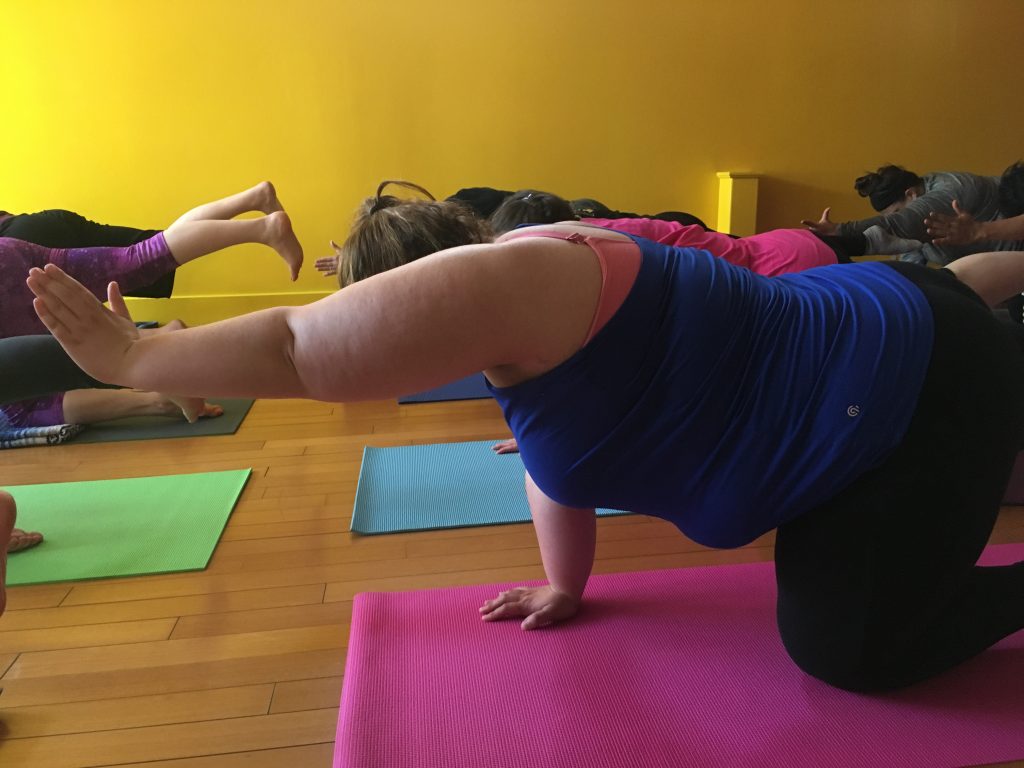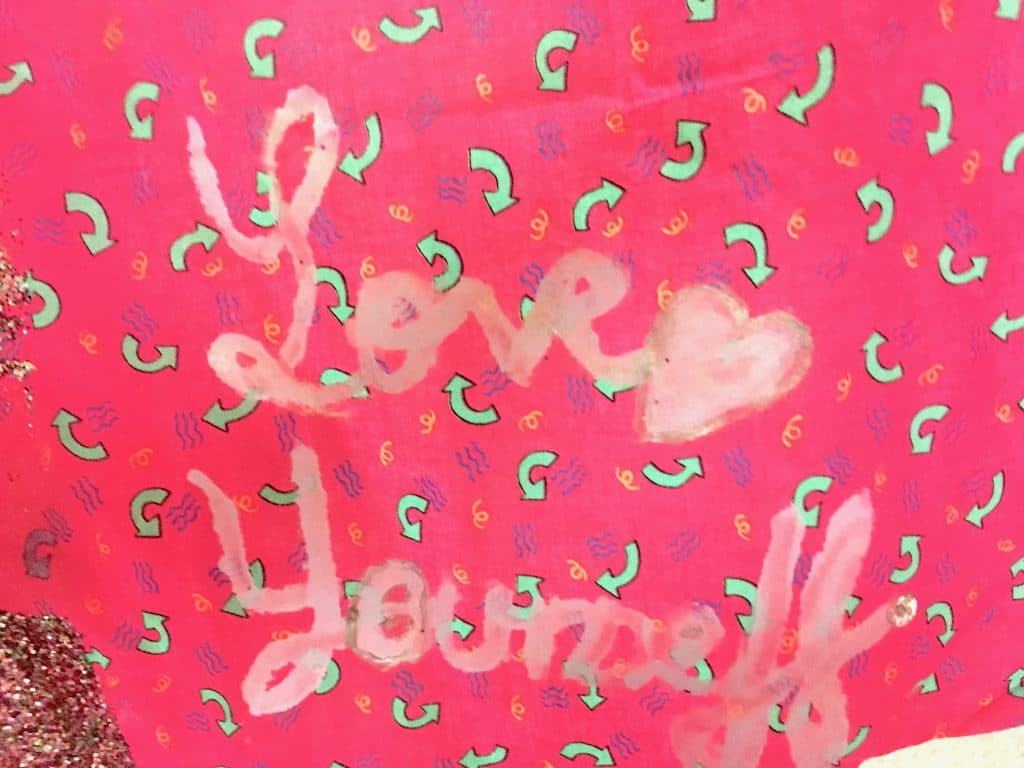When I got a report that one of my teen yoga students had started an extreme starvation diet because she hated her body I knew it was time to jump into the deep end of the pool of body positivity with this group.
I pulled out some Jessamyn Stanley videos. This beautiful, curvy woman moves with such grace from pose to pose. She speaks candidly about loving every inch of her body as it is.
At my next class we did some yoga poses for about 15 minutes and then took a break and I played the videos. I could hear silent weeping.
I asked, who doesn’t like their bodies? They all raised their hands.

Two said, “Me.”
—
Body positivity “bullshit”
Yoga can be a wonderfully empowering tool for self-esteem, regulating emotions and embracing confidence and strength.
There can be a euphoria finding steadiness in one-legged balancing postures or observing increased stability holding a core posture for a long time.
Yoga can also feel like total bullshit if you don’t like your body.
Twisting and bending into the folds of our own flesh can feel limiting and uncomfortable. This discomfort sends a message that our bodies are not right, don’t fit, don’t work. That’s a list of negatives that can annihilate any potential for positivity.
So yeah, bullshit.
Rolling out our yoga mats and moving in our bodies isn’t enough to instill positive self-talk or body image. Someone telling you you are beautiful and you should feel positive about your body isn’t enough either.
Body positivity is work.
Hard work.
It’s a rewiring of our hardwiring. And it’s for all body types. Big bodies. Small bodies. Brown bodies. Pale bodies. Female bodies. Male bodies.
In order to do the work we have to want to literally get naked with ourselves.
Scary.
The point is body positivity isn’t bullshit per se. The notion that it’s simple or quick and easy is.
There’s no magic pill. No instant conversion to our thoughts and perceptions.
Adopting positivity about our bodies means we have to know our bodies.
Know all of the folds and fleshy bits.
To feel our bony parts rub up against an object. To acknowledge how hunching over to lower our height feels in our back. To appreciate the texture of our hair.
To own the darkest or lightest tones of our skin.
And that’s exactly where we don’t want to be.
We don’t want to crawl into the spaces that we believe are our flaws. We want to create distance from our own flesh and bones, an impossibility mired in loathing.
That means we have to lean into unkind thoughts about ourselves, lean into fear, lean into pain.
The journey begins exactly where we don’t want to be.
It starts with one minute of really seeing and feeling our flesh and our skin tone and our height.
Then noticing what we see or feel.
And that means it gets messy before it feels better.
That messiness will dredge up all the guilt, shame, insecurity, anger, fear, sorrow and yearnings.
Doing this work with young people is particularly painful. Teaching young people that pain exists and to lean into it to learn from it can feel like torture. Showing them by example in how I treat my body and talk about my body is uncomfortable and vulnerable and necessary.
Touch it, name it, don’t shame it
I try to make touch a part of most regular studio yoga sessions. I invite students to notice their hands in their lap if they are sitting in meditation; to notice the touch in their hands and the body part that’s receiving the touch. But I also offer more deliberate opportunities to touch our midsections, our bottoms, our arms and shoulders in a hug. I ask students to be deliberate in the tenderness they transmit to themselves.
Some might think this is crossing the line in yoga. But I feel it’s all a part of connecting, yoking.
And what better place to start to explore this touch connection and our mental narrative than on our mats?
As you move in and out of postures your hand could graze against your waist or gently caress your thighs. Or, a personal favorite of mine, trace my face with my thumbs through prayer and feel my eyes, nose, lips. I’ve always been self-conscious about having a flat face. Tracing my face and feeling its contour in my practice brings a loving intention to my practice and it reminds me that my face is not indeed flat!
The toughest spots maybe we save for later as our practice develops. And we build on the smaller spaces to prepare us to hold our hands on our bellies and not want to distance ourselves from what we’re feeling and thinking. Embrace the bulge, the roundness, the plumpness… all the ness we can identify. Gradually feeling our breath in our tummies, our organs, our life force.
Eventually approaching perhaps in savasana, we rest our hands on the folds and rolls of our flesh and recall what others have said about it and how it makes us feel. We notice what we’ve internalized about it and begin to confront the truth and lies we’re telling ourselves.
Then most importantly, we can start to deliberately send an affirmation of love. We are touching a part of ourselves, our physical bodies – our earth suit. We are living within this frame which deserves love, not loathing. It is housing our precious, divine spirits. And if we believe in the beauty and purity of our spirits, how can we not love everything about this frame that is helping it carry out its mission?
Fake it till you make it
At the end of that teen class we sat in a circle and did an exercise to touch a part of our lower body and share what we appreciated about it, then middle body, then upper body. Everyone had the option to skip.
Often strength or functionality was the first way they showed appreciation.
Then we progressively got a little more intimate.
One shared how a toe looked, that they always thought it was their cutest toe.
One shared that they liked how soft the skin on their inner arm feels.
And then there was a lull. That awkward silence as some were thinking or hiding.
That’s OK, I said. We can also fake it till we make it.
There were some chuckles and not a few sighs of relief.
It’s a process and a practice, I reminded them. And we took a few steps today. And we get another chance tomorrow.
